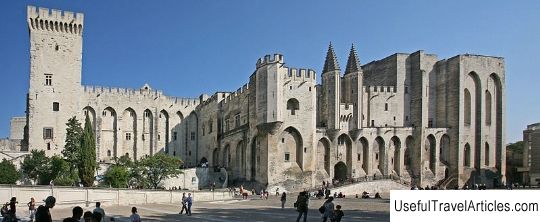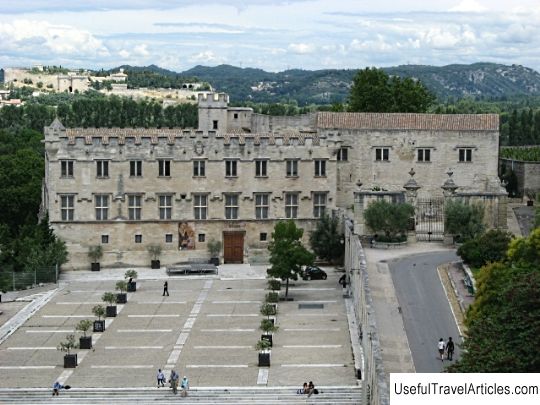Papal Palace in France, Avignon resort
Rating: 7,9/10 (1295 votes)  The Papal Palace – one of the most important medieval Gothic buildings in Europe. The palace is included in the UNESCO World Heritage List. Avignon from the XIV century became a papal residence, when Pope Clement V moved the Roman curia to Avignon, not wanting to see the chaos reigning in Rome after his election to the most holy post. This is how he began the long Avignon period of the captivity of the popes. Clement V was staying in the Dominican monastery in Avignon, and Pope John XXII, his successor, decided to establish an impressive building in the city. However, the reconstruction of the old palace began only under Pope Benedict XII and lasted until 1364. The palace consists of two parts: the Old and New palaces. At the time of completion of construction, the area of the palace was 11,000 square meters. The construction and maintenance of the palace took up most of the Pope's income. Thus, the palace became the most expensive whim of the papal house. Changes in buildings also depended on the change of popes: the palace, created by the architect Pierre Poisson under Pope Benedict XII, demolished the old bishop's castle, and instead erected a large fortified building. With the following dads – Clemente VI, Innocent VI and Urbana V – the building has been significantly expanded. The enlarged building became known as the New Palace. Towers were completed, adjacent buildings, including the Great Chapel 52 meters long, the main courtyard (courtyard of Honor), decorated with tapestries, paintings, frescoes, sculptures, was improved. In 1377, the papal the diocese returned to Rome, but as a result of the Great Western Schism, Antipope Clement VII and Benedict XIII settled in Avignon. In 1433, the palace was returned to Holy Rome, after which it was in the hands of the popes for 350 years. Gradually, the palace began to fall into desolation. By the revolution of 1789, the building was already dilapidated. During the reign of Napoleon Bonaparte, a prison and military barracks were located here. In the year of the military occupation, the palace received even greater damage, during the period of the anti-clerical Third Republic, all wooden decorative elements were removed from the palace, the frescoes were painted over or destroyed. Livestock stalls were installed here. In 1906, the palace was recognized as a national museum, to this day it is in the process of restoration. Today, a significant part of the decoration of the palace has been restored. Outwardly it is a fortress: high walls with narrow pointed arches and windows, wide loopholes; and the interior is typically palatial: the walls are decorated with frescoes, tapestries, and other decorative elements.    We also recommend reading Historic city center in France, Avignon resort Topic: Papal Palace in France, Avignon resort. |




